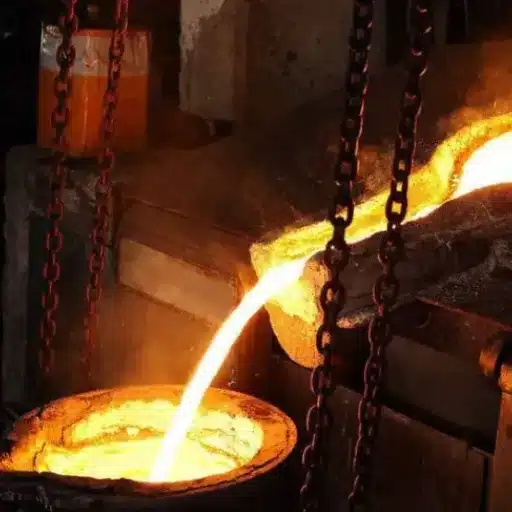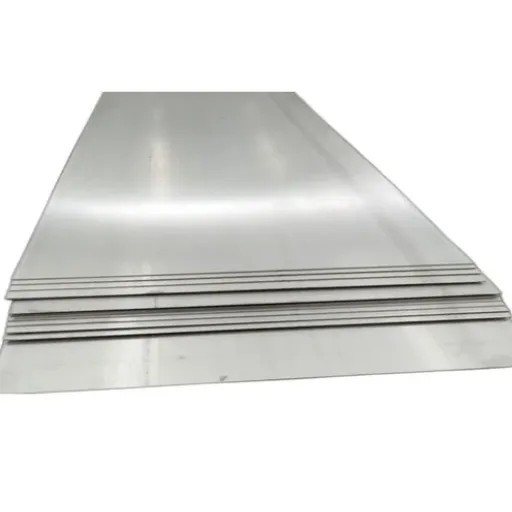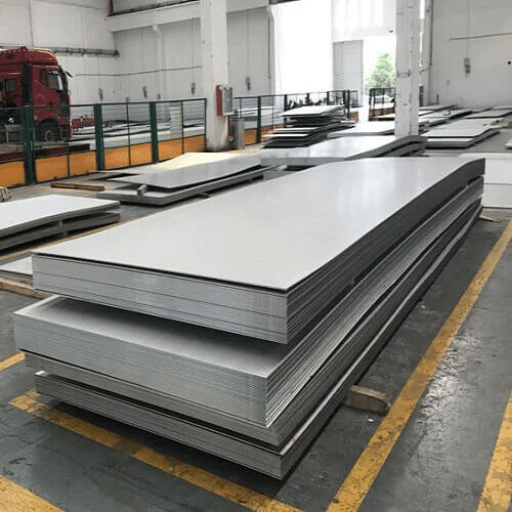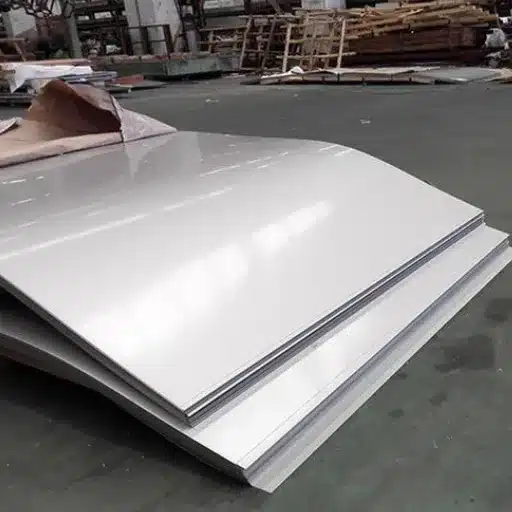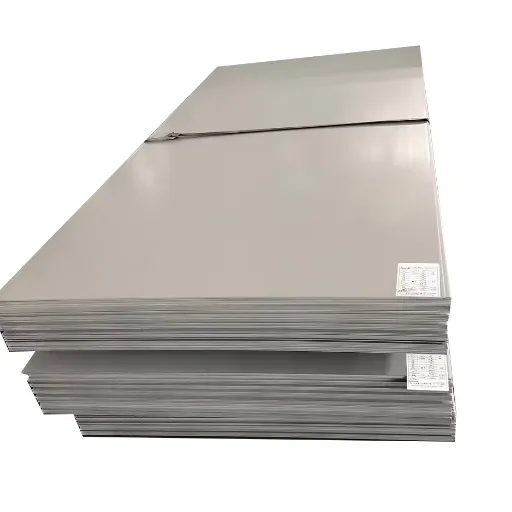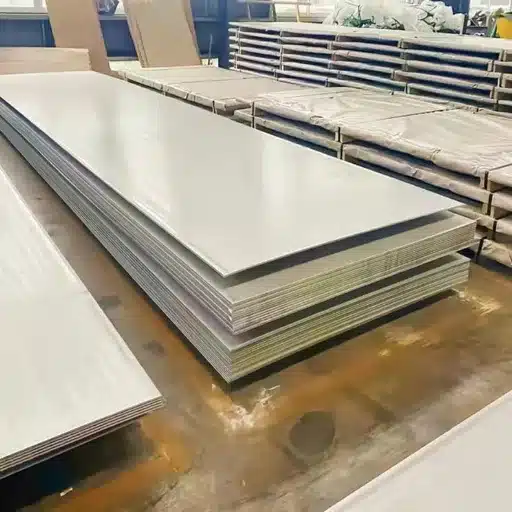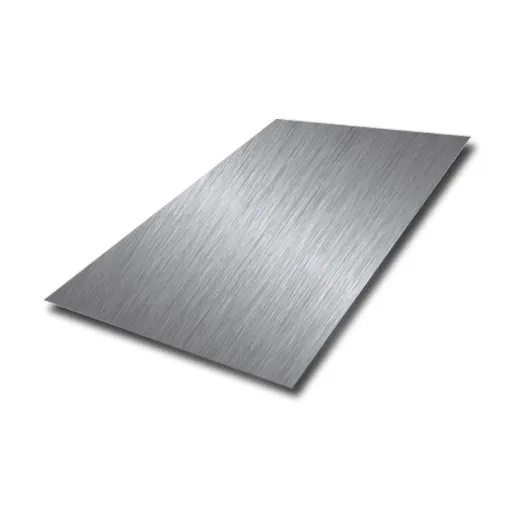Iron, being among the most common and versatile elemental metals on Earth, has been a fundamental component in the growth of human civilization. From skyscrapers and industrial infrastructure to intricate machines, the whole gamut of modern-day applications rests upon this remarkable element. At the foundation of iron’s functional properties lies an essential characteristic—its melting point. Understanding this property is not just about grasping a scientific fact, but comprehending how industries leverage it for everything from construction of advanced buildings to developing cutting-edge technologies. We are going to explore the melting point of iron from a scientific perspective, examining its practical implications and industrial innovations. Stay with us as we delve into revealing the vital role this basic property of iron plays in shaping the world we live in.
Introduction to Iron and its Melting Point
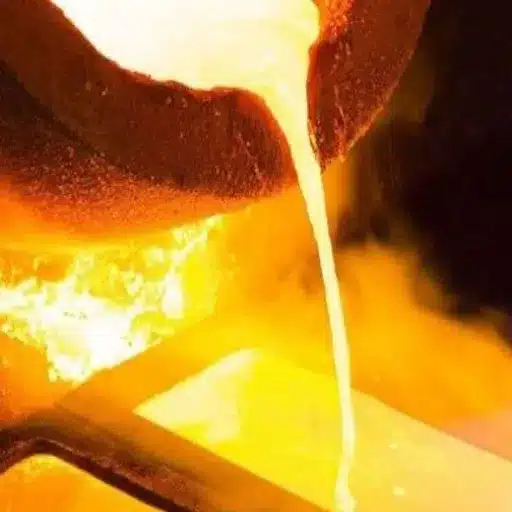
Definition of Melting Point
The melting point of a substance is the particular temperature at which it changes state from solid to liquid at atmospheric pressure. For iron, this critical transition occurs at approximately 1,538 degrees Celsius (2,800 degrees Fahrenheit). This property is fundamental when examining the various uses of iron across industries.
In manufacturing and metallurgy, the melting point of iron is paramount. Production methods, shaping, and combining the metal with other elements to form alloys (such as steel) are determined by its melting temperature. Heating iron to its melting temperature allows it to be molded into the desired form or mixed with other materials to enhance properties such as strength, corrosion resistance, and ductility.
Its extremely high melting point makes iron ideal for applications demanding durability against extreme temperatures. It is produced in large quantities for construction materials, automotive parts, and various types of heavy machinery operating under high heat. Knowledge of the melting point helps engineers and manufacturers in developing robust products suited for demanding environments.
Overview of Iron Properties
Iron represents a key element that possesses a remarkable combination of properties, making it suitable for various applications. Its unparalleled mechanical strength allows it to withstand extreme stress and pressure, making it invaluable in the construction of buildings, bridges, and transportation infrastructure. Additionally, iron can be combined with other elements to create alloys, such as steel, which improves upon iron’s inherent strength and corrosion resistance.
Key Properties of Iron:
- Excellent Heat and Electrical Conductor: Qualifies iron for use in electrical systems, heating systems, and manufacturing processes where energy transmission is critical.
- High Melting Temperature: At 1,538°C (2,800°F), iron can be utilized in high-temperature industrial furnaces, turbines, and heavy machinery.
- Magnetic Properties: Essential for electromagnetic devices, electric motors, and transformers.
- Biological Importance: A crucial component of hemoglobin in the human body, responsible for oxygen transport.
Understanding iron and its properties enables us to harness all its advantages across scientific, industrial, and medical applications.
Importance of Melting Point in Metallurgy
From a metallurgical perspective, the melting point of a metal is a critical property that determines working processes and material forming. A clear understanding of melting points provides pathways for their utilization during casting, welding, and forging operations, thereby producing robust and quality materials. The melt temperature is strategically used to obtain desired results without compromising the structural integrity of metals.
Different metals have different melting points and are designated for various industrial applications. For instance, metals with high melting points, such as tungsten, are typically used for manufacturing heat-resistant tools and components, while aluminum, which melts at relatively lower temperatures, is employed for a plethora of lightweight applications. The melting points also influence the production of alloys; metals must be combined at specific temperatures for them to bond appropriately and form a homogeneous mixture.
💡 Industrial Efficiency: The efficiency of modern metallurgical technologies depends heavily on melting point knowledge. The smelting process, for instance, exploits the melting temperature of ores to effectively extract pure metals. Industries optimize temperature usage based on melting points to lower energy consumption, enhance cost-efficiency, and ensure minimum wastage. Therefore, the melting point remains a vital parameter in the evolution of metallurgical practice and technology.
Factors Influencing the Melting Point of Iron
Effect of Extreme Pressure
Extreme pressure significantly influences the melting point of iron, making its behavior highly dependent on varying environmental conditions. Under pressure-induced conditions, iron’s melting point increases substantially because the compressed atomic structure requires more energy to break apart. The following data points illustrate this relationship:
| Pressure Condition | Key Findings |
|---|---|
| Pressure-Temperature Relation | At approximately 50 GPa of pressure, iron’s melting point reaches about 3,700 K, compared to the standard 1,811 K at atmospheric pressure. |
| Core-Mantle Boundary Conditions | Studies of Earth’s core show that iron’s melting point at the core-mantle boundary (estimated pressure of 136 GPa) reaches nearly 4,000 K, supporting the direct relationship between pressure and melting point. |
| High-Pressure Phase Formation | Under extreme pressures, high-density crystalline structures like hexagonal close-packed (HCP) can form in iron. These structures require significant energy to transition into liquid state, raising the melting temperature. |
| Laboratory Simulation Results | Thermodynamic studies confirm that iron’s melting point increases linearly beyond 100 GPa pressure, in accordance with theoretical models. |
| Planetary Science Implications | Melting behavior under increased pressure helps explain the solidification of iron cores in terrestrial planets and their geodynamic and magnetic behavior. |
These findings demonstrate how crucial pressure is in understanding iron’s melting behavior, with important implications for both industrial applications and planetary studies.
Role of Impurities in Iron Ore
Impurities in iron ore significantly affect ore quality, melting point, and usability in industrial applications. Understanding these impurities is crucial since they impact steel production efficiency and other metallurgical processes. Below is a comprehensive overview of five common impurities found in iron ore:
| Impurity | Chemical Formula | Impact on Iron Ore |
|---|---|---|
| Silicon Dioxide | SiO₂ | Major impurity that reduces ore quality and complicates smelting. High silica content forms slag that must be disposed of during refining. |
| Aluminum Oxide | Al₂O₃ | Lowers the melting point of iron and increases slag viscosity, disrupting blast furnace operations and reducing efficiency. |
| Phosphorus | P | Harmful impurity that makes steel brittle and drastically diminishes mechanical properties. Requires extra processing charges for removal. |
| Sulfur | S | Undesirable impurity that weakens iron, reducing ductility and toughness. Must be removed during smelting to produce high-grade steel. |
| Magnesium Oxide | MgO | High quantities alter slag chemistry during smelting, affecting extraction efficiency and increasing operational costs. |
⚠️ Important Note: The type and amount of impurities present vary depending on the ore source. Therefore, ores must undergo rigorous beneficiation and refining processes to produce high-grade steel.
Impact of Alloying Elements on Melting Point
Alloying elements significantly influence the melting point of steel and other iron alloys. These elements modify the microstructure and thermal behavior of materials, either lowering or raising melting points depending on their type and concentration. Understanding each alloying element’s effect is essential for designing materials for specific applications.
| Alloying Element | Melting Point | Effect on Steel |
|---|---|---|
| Carbon (C) | Varies | Major alloying element that depresses the melting point. Pure iron melts at 1538°C, while carbon-rich cast iron melts around 1150°C. |
| Chromium (Cr) | 1907°C | Increases corrosion resistance and hardness. Generally raises the melting temperature of steel due to its high melting point. |
| Nickel (Ni) | 1455°C | Enhances toughness and corrosion resistance. Slightly decreases the melting point due to its lower melting temperature compared to pure iron. |
| Silicon (Si) | 1414°C | Acts as a deoxidizer and increases melting point. Enhances thermal stability in small amounts but causes brittleness in larger quantities. |
| Manganese (Mn) | 1246°C | Enhances strength and wear resistance. May slightly reduce melting temperature but plays a crucial role in offsetting sulfur’s harmful effects. |
The operational temperature range of a steel alloy and its applicability in various industries depend largely on these alloying elements. Concentration control must be performed diligently to optimize properties while maintaining high-temperature stability.
Experimental Methods for Determining Melting Point
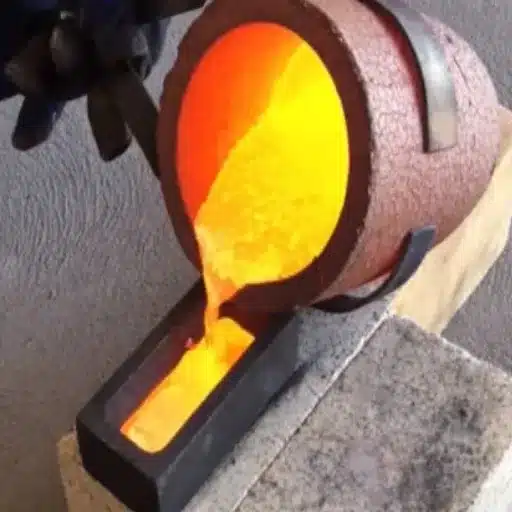
Traditional Techniques
Conventional methods of measuring melting points of metals and alloys have historically encompassed several techniques, including Differential Thermal Analysis (DTA) and thermocouples. By gradually heating a sample under controlled conditions, these techniques observe temperature or phase variations.
Traditional Measurement Techniques:
- Differential Thermal Analysis (DTA): Measures the temperature difference between a sample and reference material during phase transitions like melting.
- Thermocouples: Highly sensitive devices designed to measure the actual temperature as material transitions from solid to liquid.
- Optical Pyrometry: Particularly suitable for high-temperature measurements since it requires no physical contact with the sample, reducing contamination risk.
- Resistivity Measurements: Detect sudden drops in electrical resistance that signal the beginning of melting.
While these methods are reliable, they require meticulous calibration and handling to avoid human error. Variables such as sample purity, environmental conditions, and instrument limitations can affect measurement accuracy. To address this, repeated measurements and stringent quality controls are applied for validation.
🔬 Modern Integration: Traditional approaches are evolving through integration with modern technologies. Computerized diagnostic systems and enhanced sensors provide greater precision and reproducibility compared to classical methods. Combining traditional methods with computational approaches increases predictive capacity for ascertaining melting points under different industrial conditions.
Advanced Methods in High-Pressure Research
High-pressure research has advanced significantly with the development of innovative experimental and computational tools. The diamond anvil cell (DAC) and multi-anvil press are two of the most important instruments in this field, capable of generating extreme pressures similar to those found in planetary interiors. The capacity to simulate extreme environmental conditions has enabled researchers to study material properties such as phase transitions, elasticity, conductivity, and reactions that were previously unobservable.
🔧 Experimental Tools
Diamond anvil cells and multi-anvil presses generate extreme pressures. Advanced techniques like X-ray diffraction, synchrotron radiation, and Raman spectroscopy enable in-situ measurements of high-pressure phenomena.
💻 Computational Approaches
Since the 1980s, computational methods have complemented experiments. High-performance computing simulates material behavior under extreme pressures, guiding innovations and assisting in material discovery.
⚡ Dynamic Compression
Laser-driven shocks briefly achieve ultrahigh pressures and temperatures similar to stellar cores or planetary impacts, expanding research capabilities significantly.
Dynamic compression techniques, alongside laser-driven shocks, represent another important advancement. These methods briefly allow scientists to reach ultrahigh pressures and temperatures similar to those existing in stellar cores or during planetary impacts. Combining these cutting-edge techniques with machine learning algorithms provides even further possibilities. AI models, after processing enormous datasets from experiments and simulations, can predict material properties and suggest optimized research approaches. These advancements not only widen applications in fundamental physics but also suggest practical applications in designing materials for commercial use and studying planetary sciences.
Historical Context and Contemporary Research
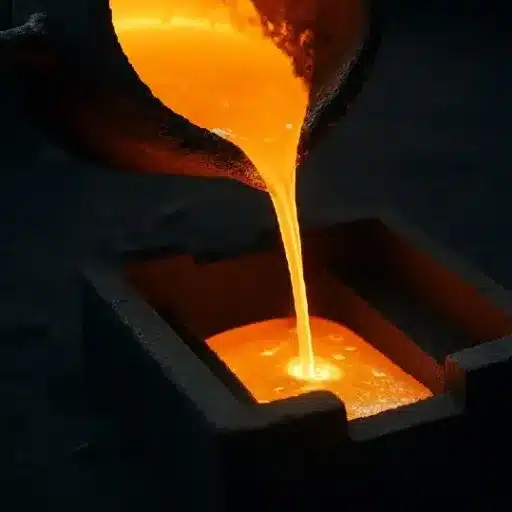
Key Discoveries in Iron Melting Point Research
The pursuit of accurate measurements for iron’s melting point has been a longstanding endeavor in material science and planetary investigations. Early work in the 19th century provided broad temperature ranges for iron’s melting point through rudimentary thermal measurement methods. These early observations were imprecise due to limited technology, but they revealed how melting transitions from solid to liquid depend on external pressure and sample impurities. Over time, improved experimental tools have enabled increasingly precise measurements.
| Era | Key Developments |
|---|---|
| 19th Century | Initial work provided broad temperature ranges using rudimentary thermal measurement methods. These observations revealed the importance of pressure and purity on melting transitions. |
| 20th Century | High-pressure experimental laboratories emerged as a major advance. Scientists could simulate Earth’s core conditions where iron exists in various states. Laser heating and DACs refined measurements: 5000-6000 Kelvin at core pressures exceeding 330 GPa. |
| 21st Century | Quantum mechanics-based theoretical computations emerged. Ab initio calculations and molecular dynamics simulations provide insights into melting over experimentally unattainable ranges, supporting precise prediction of phase transitions. |
The synergy between experimental and computational approaches has deepened understanding not only of Earth’s core but also of phenomena like exoplanet compositions and the design of cutting-edge alloys for industrial purposes. The field continues evolving with each discovery, filling knowledge gaps and paving the way for further innovations.
Recent Advances in Material Science
Material science has witnessed tremendous growth over the past decade, capitalizing on emerging technologies that impact various industries. Several key developments are shaping the future of this field:
Notable Developments in Material Science:
1. Two-Dimensional Materials
Beyond graphene, transition metal dichalcogenides (TMDs) have emerged with exceptional electrical, optical, and mechanical characteristics. These materials open new avenues for next-generation electronics, photonics, and energy storage devices. Scientists can now fabricate these materials at the atomic level, reducing defects and enabling better performance.
2. AI and Machine Learning Integration
These technologies have brought transformative changes to material discovery and design. Researchers can predict novel material properties, optimize compositions, and reduce development time without extensive experimental work. AI methods search for superconducting materials working at higher temperatures, promising large-scale energy-efficient transmission systems.
3. Sustainable and Eco-Friendly Materials
Biodegradable materials and those derived from renewable biological resources are replacing conventional plastics. Chemical recycling and upcycling methods minimize environmental impact while recovering materials. These breakthroughs ensure industries align with environmental standards, indicating material science’s commitment to creating a cleaner, more sustainable technological future.
Future Directions in Iron Melting Point Studies
One of the most promising research avenues involves exploring iron’s behavior under extreme pressure and temperature conditions, such as those found in Earth’s core or during advanced manufacturing processes. Studying these scenarios provides deeper insights into iron’s phase transitions and planetary core formation. This knowledge drives scientific discoveries forward while providing foundations for industries utilizing iron’s special properties.
🔮 Future Research Priorities:
- Advanced Experimental Setups: Development of precision instruments like Diamond Anvil Cells and Synchrotron X-ray Diffraction for measuring iron’s melting point under various conditions.
- Computational Modeling: Utilizing density functional theory-based simulations to predict iron’s behavior at the atomic level, complementing experimental approaches.
- Sustainability Focus: Optimizing iron production and recycling methods with melting behavior as a constraint to reduce energy consumption and carbon emissions, aligning with global climate change initiatives.
The merger of experimental and theoretical approaches will provide more accurate and comprehensive studies, while sustainability considerations ensure these research efforts contribute to greener material science and industrial practices.
Industrial Applications of Iron Melting Point
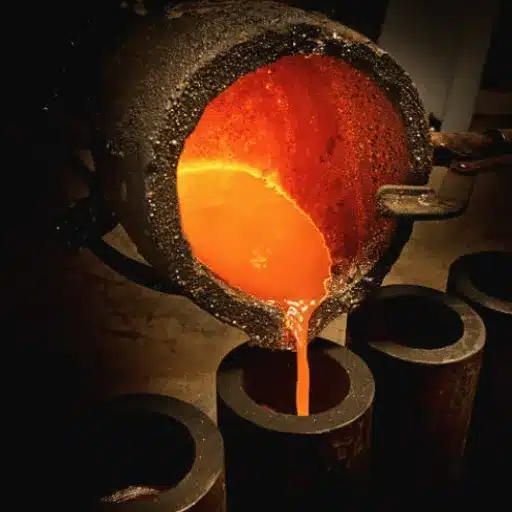
Significance in Casting Processes
The melting point of iron, approximately 1,538°C (2,800°F), is an immense factor in the casting industry. This critical temperature ensures effective melting of iron for mold filling while preventing energy wastage during heating. Casting involves pouring molten iron into molds and allowing them to cool, enabling the creation of complex shapes used in construction, automotive, and machinery manufacturing industries. Understanding iron’s exact melting point helps engineers design molds and processes that withstand very high temperatures without compromising the quality and strength of final products.
✅ Modern Casting Advancements:
- Advanced Induction Furnaces: Provide real-time feedback during melting, allowing manufacturers to achieve optimal energy consumption levels.
- Temperature Monitoring Systems: Enable precise control of melting processes, reducing wastage and facilitating uniform molten metal flow.
- Enhanced Precision: Modern technologies yield castings with greater accuracy, improving production efficiency and reducing costs.
- Sustainable Manufacturing: These developments support increased demand for environmentally conscious industrialization.
Knowledge of iron’s melting point also enables alloying with other elements to create materials capable of withstanding harsh working conditions. For instance, cast iron containing carbon exhibits better wear resistance and heat conductivity, making it ideal for engine blocks and piping applications. As material scientists continue improving casting processes by integrating data-driven innovations with melting point knowledge, they better meet modern industrial demands.
Advanced Welding Techniques and Their Requirements
Advanced welding methods have expanded the metal-fabrication industry’s capabilities, offering precision, durability, and versatility across numerous applications. Modern welding processes include laser welding, friction stir welding, and electron beam welding, each with distinct characteristics and requirements.
| Welding Method | Applications | Key Requirements |
|---|---|---|
| Laser Welding | Aerospace and automotive industries where minimal tolerances are required | Clean, well-prepared surfaces; advanced machinery capable of compensating for variations in beam intensity and focus |
| Friction Stir Welding | Joining aluminum and other non-ferrous metals | Operates below material melting point; requires special tools and precise control of rotational speed and feed rate |
| Electron Beam Welding | Nuclear, defense, and high-performance engineering applications | Vacuum environments mandatory; highly skilled operators and accurate monitoring systems for optimal results |
Each advanced welding technique comes with stringent requirements for material preparation, equipment, and operator expertise. Combining these advanced technologies with carefully controlled processing steps helps industries achieve the highest quality and most efficient welding outcomes.
High-Temperature Material Design Considerations
Designing materials for high-temperature applications requires intimate knowledge of thermal, mechanical, and chemical factors affecting their performance. The material’s melting point, thermal conductivity, and resistance to oxidation and creep under prolonged high-temperature exposure must all be carefully considered. Superalloys containing nickel, cobalt, or chromium elements enhance strength and resistance to extreme environments.
⚙️ Critical Design Factors:
- Thermal Expansion Behavior: Materials with different expansion coefficients can experience stress and failure when subjected to temperature variations.
- Corrosive Environment Resistance: Particularly important in aerospace, energy production, and chemical processing industries.
- Material Degradation Prediction: Essential for preventing component failure in demanding applications.
Modern computational simulations and material testing have advanced significantly, allowing precise modeling of material behavior under challenging environmental conditions. Using these technologies and robust data analysis, engineers optimize material properties, improving efficiency and increasing the lifespan of high-temperature components.
References
- Princeton University – Iron Properties
Provides detailed information about iron, including its melting point of 1539°C and electronic configuration. - Harvard University – Melting of Iron to 290 Gigapascals
Research discussing iron’s melting point under extreme pressures, estimating approximately 5500 Kelvin at the inner core boundary. - NIH PubChem – Iron
Database listing iron’s melting point as 1538°C, referencing the CRC Handbook of Chemistry and Physics. - Click here to read more.
Frequently Asked Questions (FAQ)
❓ What is the melting point of iron?
The melting point of iron is approximately 1538°C (2800°F). This very high melting temperature makes iron suitable for all industrial activities including steel production and structural work.
❓ How does pure iron’s melting point compare with iron alloys?
Pure iron melts at 1538°C. In contrast, iron alloys may melt at different temperatures depending on composition. The temperature increase or decrease largely depends on alloying elements such as carbon and nickel. Higher carbon content in cast iron gives it a lower melting temperature.
❓ What happens to iron after it reaches melting point?
Near melting temperature, iron changes from solid state to liquid, producing molten iron. This process involves breaking the metallic bonds holding iron atoms together in solid form, resulting in a liquid that can be poured or cast into molds.
❓ How do contaminants like sulfur and phosphorus affect iron’s melting point?
Such contaminants lower iron’s melting point. These elements disrupt the lattice structure of iron, thereby compromising thermal properties and the overall quality of iron and steel-making processes.
❓ How is molten iron obtained in blast furnaces?
In blast furnaces, iron ore is smelted at very high temperatures to separate iron from impurities, producing molten pig iron, which can subsequently be converted into various forms of wrought iron and steel.
❓ What is the Curie temperature and its relevance to iron?
The Curie point (or Curie temperature) is the point at which iron loses its magnetism. This is important for applications where magnetic properties must be considered, as it designates the magnetic material’s working temperature range.
❓ Why is iron’s melting point important in industrial production?
Iron’s melting point is crucial in industrial production as it determines the temperatures needed for smelting, casting, and forging. Understanding this melting temperature enables efficient energy use and convenient material processing during manufacturing.
❓ Can production methods affect iron’s melting point?
Yes. Production methods such as electric arc furnaces or blast furnaces can affect the melting point. Each method produces iron of different quality and alters impurity content, thus influencing the melting point.
❓ What differs about the melting temperature of α-iron and γ-iron?
Alpha (α) iron has a body-centered cubic (bcc) structure with stability at lower temperatures, while gamma (γ) iron has a face-centered cubic (fcc) structure with stability at higher temperatures. Changes between forms occur at specific temperatures, but both melt at pure iron’s melting point of 1538°C.
❓ What effect does carbon content have on iron’s melting point?
Carbon content significantly affects iron’s melting point. Higher carbon content lowers the melting point, especially in cast iron, enabling cheaper melting and processing but potentially affecting the strength and properties of the resultant material.
Understanding iron’s melting point is fundamental to advancing both scientific knowledge and industrial applications. From planetary science to sustainable manufacturing, this essential property continues to shape our technological future.

